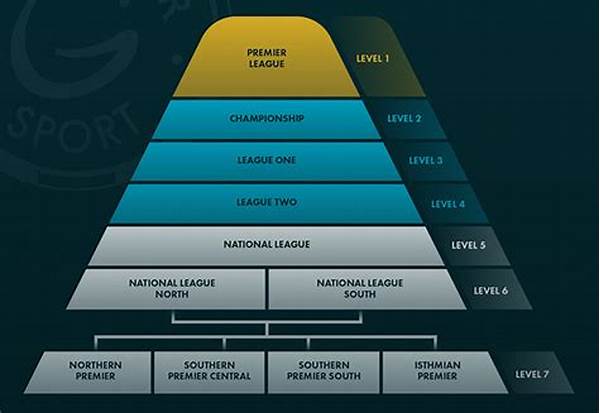How Professional Sports Leagues Are Structured

How Professional Sports Leagues Are Structured
Professional sports leagues are like the finely-tuned engines that drive excitement, passion, and even economic growth for millions of fans around the world. But beyond the thrill of the game and the roar of the crowd, have you ever wondered how professional sports leagues are structured? Today, we’re diving into the inner workings of these organizations to reveal not just their mechanics but the magic that makes them so compelling. Whether you’re a sports enthusiast, a curious mind, or even someone looking to break into the sports business, understanding league structures can provide valuable insights, and who knows, might even inspire you to take that next professional step.
Read More : The Importance Of Agility Training In Martial Arts And Skating
Imagine waking up one day and deciding you wanted to create your own sports league. What would it take? An essential starting point would be an understanding of the league structure. Typically, professional sports leagues are organized in such a way that they balance competition with cooperation. Teams within a league are both competitors on the field and partners in the business of the league. Revenue sharing, drafting systems, and salary caps are just a few examples of mechanisms that encourage parity and collective success.
Now, let’s paint a broader picture. If we’re to dissect the anatomy of a league, it all starts at the top with the governing body, often referred to as the league office. This organization sets the rules, manages operational tasks, and resolves conflicts that can arise between its constituent members. It’s a herculean task requiring diplomatic finesse, strategic foresight, and the kind of leadership that calls for both respect and authority. And remember, how professional sports leagues are structured often reflects a delicate balance between regulation and freedom, enabling a dynamic yet controlled environment.
For fans, the structure might be invisible but its effects are palpable. Ever wondered why some leagues have playoffs while others apply a different format? Different structures can affect everything from player transfers and team finances to how the season unfolds. Take a moment to consider the English Premier League, with its relegation system, or the NFL, which operates with playoffs culminating in the Super Bowl. Each has a unique structure serving distinct strategic goals, whether maximizing viewer engagement, generating economic benefit, or enhancing competitive fairness.
Core Elements of Professional Sports Leagues
Understanding how professional sports leagues are structured involves recognizing several crucial elements. These include the competitive format, business models, governance policies, and community engagement strategies, all working in harmony to ensure not only the survival but the thriving success of a league.
Introduction: Unleashing the Mystique Behind Sports League Structures
To truly appreciate the magic of sports leagues, we need to explore the fascinating, complex systems underpinning them. Think of it like solving a massive puzzle—pieces falling into place to create a vibrant picture of passion and excitement, one game at a time. Whether soccer, basketball, or any sport that ignites fandom globally, how professional sports leagues are structured becomes a captivating study of organization and heart.
Initially, it may all seem quite straightforward: teams competing for the top prize in their sport. However, delve deeper, and you’ll find each league is akin to an intricate tapestry woven from various threads. Operating under strict governance models, leagues meld economics, sportsmanship, and strategy into a cohesive unit. Ever thought about salary caps or how broadcasting rights are distributed? Every single element is part of a grand design, aiming for competitive balance and financial success.
Take Major League Baseball, with its blend of tradition and modern analytics. Or consider the NBA, defining itself globally through unique marketing strategies and player-centric narratives. What makes these leagues stand apart is their tailored approach to structure, which resonates with both fans and stakeholders alike. The result is not an accidental concoction but a carefully curated experience that successfully melds passion with profitability.
And why does understanding how professional sports leagues are structured matter to you? Imagine harnessing this knowledge for personal or business gains. You might be an aspiring sports manager or a fan looking to better appreciate the spectacle. Whatever your goal, unraveling the sophisticated structure of professional leagues can offer a wealth of insights, motivation, and even a fresh appreciation for the games you love.
Read More : Bbc Sports Football Presents Unique Global Football News
The Underlying Complexity of League Structures
Despite the glamour and glory, the architecture of sports leagues can often overwhelm those standing on the fringes. Here, we explore the roles each section plays within the grand theater of sports.
Exploring Variability Across Sports Leagues
Different leagues adopt varied structures based on geographic, cultural, and historical influences. So, what sets them apart, and how do they compete for viewer loyalty? How professional sports leagues are structured varies based on these multiple dimensions.
Aims of Effective Sports League Structures
Structural Insights: Building a Championship-Worthy League
When we talk about how professional sports leagues are structured, it’s vital to recognize that each league is much like a well-oiled machine. In general, these structures are designed to handle pressure situations, deliver consistent performance, and operate under stringent regulations while still offering excitement to their fan base. But what goes into building a model that embraces competition, collaboration, and commercial success?
Key decisions often revolve around revenue-sharing models and salary cap rules. These financial mechanisms aim to ensure financial fairness and sustainable growth, preventing a single team from cornering resources and talent. Engaging in competitive business practices allows for robust market visibility, resulting in increased profits and investor confidence.
Then we have the broadcasting and media rights – a cash cow for leagues. A structured approach towards sharing media rights has revolutionized revenue streams and fan reach. Couple that with the blossoming relationship between leagues and technology, like the current wave of virtual reality-enhanced games, and it becomes clear just how dynamic and forward-thinking these structures can be. The meshing of sports with tech is not just a futuristic vision but today’s reality, redefining how games are consumed and enjoyed worldwide.



